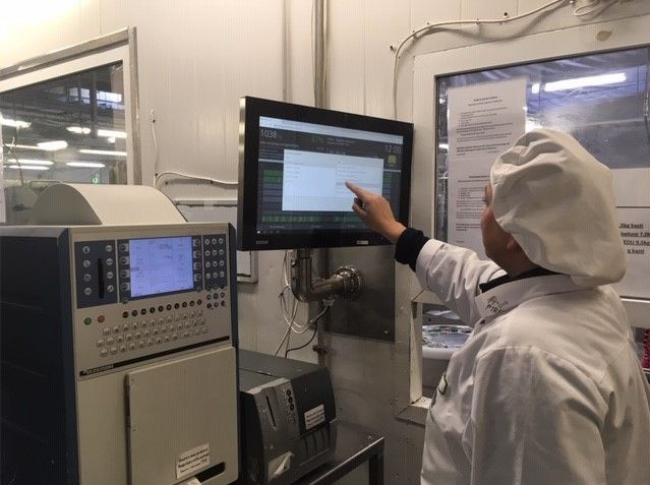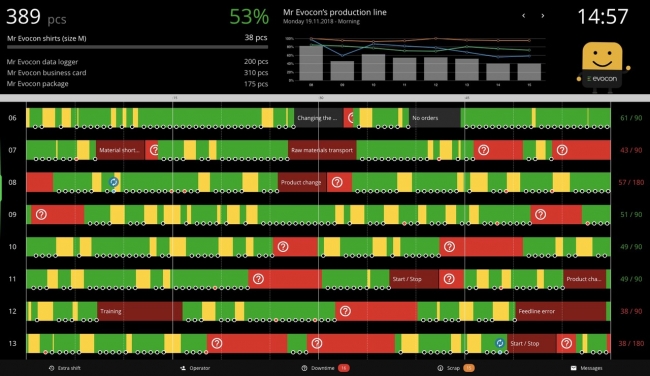4 minute read • published in partnership with Evocon
Case Study: How to maximise keeping production equipment up and running
HKScan is a Scandinavian meat and food products manufacturer that employs around 7,200 people. The firm produces and markets pork, beef, poultry, and lamb products. The company’s domestic markets are in Finland, Sweden, Denmark, and the Baltics, and their products are exported to over 50 countries.
As Estonia’s largest food product manufacturer, HKScan is always mapping ways to add speed and efficiency to its production. To be sure that any planned changes achieve their goals, the flow of production must be continually measured and analysed.
So, the development of an IT solution for the packaging line began. Its productivity was erratic, and the workers wasted a lot of their time maintaining the equipment. The goal was to understand precisely where the losses were occurring, how effectively the equipment was being used, and why there were delays in production.
Besides, there was a desire for a better overview of how work time was being used. Thus, it was decided that, in the process of performing the updates, the new solution would include terminals at each packaging machine that would record its data. The main goal was not to check up on the employees, but to create dialogue: thanks to the IT solution, the workers have a say in solving problems and can offer new solutions.

HKScan wanted to monitor productivity, understand precisely where the losses were occurring and why there were delays in production so they could make strategic improvements / Picture: HKScan/Evocon
Today, in cooperation with Evocon, a terminal has been placed at every packaging machine. These terminals visualise production activity and highlight issues that need to be addressed and bottlenecks in production.
The working principle of the solution is simple: the worker must, on the touchscreen, choose a reason why the line has stalled. Special attention was paid to making the solution easy to understand. So, the traffic light principle was used, named as the “Lineview colours” of Evocon.
Green means the line is working at the designated speed, yellow means a decrease in speed, and red indicates that the machine had stopped. When the worker marks the reason for the stop, all the information flows to management level where it can be analysed. It was also possible to generate different reports, both as a table or as a graphic. From there, accurate analysis can be done to decide on how to increase the production and effectiveness of the line.
Implementing upgrades
The most complicated part of implementing the upgrade was training the people and their fear of “something new”. As the goal was to simplify the use of the new system, groups of reasons were added in both Russian and Estonian (Latvian and Russian at the Jelgava facility) which are two of the language options Evocon presents among many.
It was also essential to explain to the workers why the upgrade was necessary and why the business needs new systems – namely, to understand how effectively the line is being used and where problems could be hiding. In the case of the latest upgrades, they must continue dealing with the mapping of the issues and using the information that has been received while accounting for a particular cost in time. The incoming data must be analysed to find appropriate solutions, test them in real production conditions and get feedback.
Improving productivity
Thanks to the simplified yet effective OEE (overall equipment effectiveness) monitoring with Evocon, HKScan’s packaging line has seen an improvement in OEE of between 10 and 15%, depending on the specific device.
The weekly analysis is performed on how lulls (breakdowns, configurations, etc.) increased production time, the relation of that lag to the actual amount produced by the line, the theoretical difference in output and an assessment of the percentage of scrap and other factors. An overview of the usability of the equipment allows analysis to be done on how to decrease fluctuations. At the management level, this means that decisions can be made quicker and more intelligently.

With the simplified yet effective OEE monitoring from Evocon, HKScan’s packaging line has seen an improvement in OEE of between 10 and 15% / Picture: Evocon
The impact of the IT solution reaches much farther than the specific line, helping to get an overview of the entire production cycle. For instance, a lag in the packaging line may relate to the arrival of material. Thus, no change in the work of the line itself is needed, but rather the other process to make the transitions on production as smooth as possible.
One upgrade leads to another and today ways of more accurately measuring scrap, and the quality of the packaging is being mapped. In the long term, the entire production process should be able to be monitored, and its data analysed.
Through their experience with Evocon, HKScan recognized the importance of a standardised OEE system. So, the company is planning to expand this pilot solution to its other packaging lines. Currently, the solution is being used in the company’s facilities in Tabasalu and Jelgava.
As a production monitoring software tool, Evocon’s motto is to make data easy to understand with smart visuals and offer manufacturers (regardless of their sizes and infrastructure) to get started with their OEE processes with their 30-day free OEE trial.
The goal is clear: to find out, with the help of the IT solution, how to keep the machines running as much as possible, to minimise losses, and to increase productivity. Getting the right software tool and implementing OEE efficiently are the factors that define real success.
